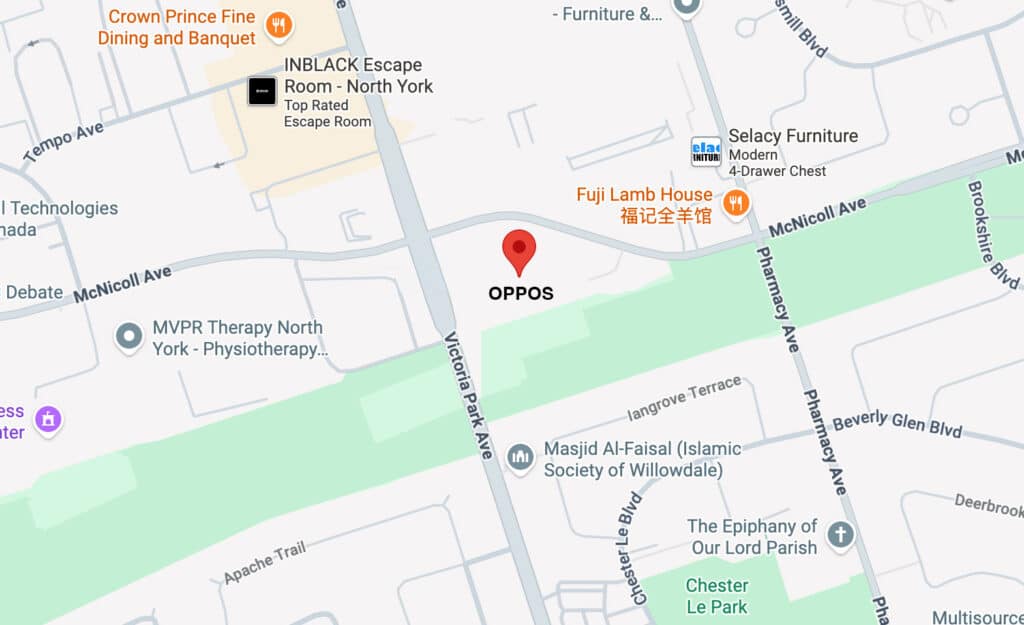How does HIPAA work with Smart Hospitals
The integration of AI in healthcare has been widespread across several industries, and the healthcare sector is no exception. It may be scary to think that trained doctors, nurses, and other healthcare professionals are relying on Artificial Intelligence (AI) to help some of the most vulnerable members of society.
Healthcare organizations and hospitals worldwide are facing numerous challenges. These include understaffing, maintaining patient care and safety, financial difficulties, and regulation changes. As a result, there is increasing demand for integrating AI technology to help alleviate workloads.
This demand has led to the development of smart hospitals. A smart hospital is a healthcare facility that uses data-driven insights, automation, machine learning, and artificial intelligence to enhance decision-making and improve health outcomes.
Working with AI is important in hospitals. It helps to keep patients safe and assists doctors and staff in providing better patient outcomes. When used effectively as an extension of existing healthcare systems, AI continues to grow and reshape the healthcare industry.
With AI comes the ability to analyze vast amounts of medical data. In healthcare, this includes clinical data, electronic health records, patient information, health records, and healthcare proxy and release forms. AI can quickly assist medical professionals in reaching conclusive disease diagnoses using indicators that might have been overlooked otherwise.
Furthermore, beyond diagnosis, whether through simple or advanced clinical decision-making, creating personalized treatment plans, or enhancing patient care, AI supports clinical practice and workflows, as well as navigating complex compliance regulations.

- Final Thoughts
The Origins of AI in Healthcare
AI first emerged in 1956 but did not begin to be utilized in the healthcare field until the early 1970s, when MYCIN was produced from the research. It was a program that helped identify blood infections in treatments. Other notable iterations at the time include Internist-I, a rule base expert system that assisted in providing diagnosis for complex diseases, and causal-associational network (CASNET) a tool designed specifically for the field of ophthalmology to assist in diagnosing and treating glaucoma, a serious eye disease that can lead to blindness. As time progressed, throughout the 80s and 90s new AI systems helped to achieve many medical advancements.
Today, AI performs a wide range of tasks, from as simple as using chatbots and virtual assistants to provide answers to patient inquiries to analyzing brain scans and performing delicate surgeries. In addition, on the administration side, AI can be used to manage medical records, automate workflows, predict patient admissions, and optimize hospital operations. However, despite its benefits, concerns about data privacy, bias, and the loss of human interaction in patient care remain concerns that need to be addressed.
How are Smart Hospitals Created?
There have always been small solutions implemented in hospitals to improve their overall efficiency, especially as technology in general progressed. Each improvement is notable, but as hospitals tackle issues of being understaffed, working below needed funding, an aging population, and unique and novel diseases and illnesses, the need for a single solution to help combat this issue. Enter the creation of Smart Hospitals.
Smart Hospitals provides a comprehensive approach to incorporating state-of-the-edge technology into the fast-paced hospital environment. Notably, as hospitals begin to shift to disease prevention, telemedicine, enhanced security, improved Efficiency and cost reduction and general technological advances (amongst other factors), which in turn requires constant monitoring, collecting and managing of vast amounts of data effectively. As a result, the need for digital tools to manage this data effectively became more incorporated into hospitals, namely, AI.
Key elements of a Smart Hospital:
IoT
What is IoT? The Internet of Things (IoT) describes the network of physical objects—“things”—that are embedded with sensors, software, and other technologies to connect and exchange data with other devices and systems over the Internet. – Oracle. They offer many benefits for professionals in the healthcare industry, for example, remote patient monitoring, heart rate and glucose monitoring, ingestible sensors, and robotic surgery, among many other uses.
AI
As stated before, AI performs many tasks in hospitals. Some more uses include automated diagnostics and predicting likely diseases based on patient data. AI-powered robots also can assist in performing surgeries, while virtual assistants provide help managing records and creating and managing schedules. In smart hospitals, AI is also used to manage electronic health records and patient vitals. Incorporating AI into smart hospitals provides faster, more accurate care while reducing the workload on medical professionals.
Telemedicine
Telemedicine is the incorporation of electronic tools such as video conferencing and remote monitoring devices, to provide remote access to medical specialists and enable remote monitoring of patients’ health. It integrates AI, IoT, and real-time technologies.
Electronic Health Records
An Electronic Health Record (EHR) is a comprehensive electronic repository of a patient’s medical history, including past medical history, immunizations, problems, medications, vital signs laboratory data, radiology reports, and demographics. The main benefit of EHRs is their ease of access, which allows patient information to be consulted electronically locally or across borders.
Benefits of AI being incorporated in hospitals
- Increased levels of accuracy in the healthcare industry – Through the implementation of algorithms to analyze large amounts of medical data, faster detections of anomalies will occur. Furthermore, it may lead to early detection, where medicine is more likely to be effective due to early intervention. In addition, it can identify potential mistakes, leading to a reduction in false diagnoses.
- Fast Drug Discovery – Since larger amounts of data can be analyzed at fast rates it exponentially accelerates the drug discovery process.
- Personalized Health Care – AI can be used to create optimal customized patient management based on patient history and health risks, to reduce wait times, while also granting patients easier access to their health information. This can also ease the admin load on doctors and nurses. Incorporating telemedicine will also provide greater accessibility for patients regardless of location through wearables and sensors.
- Healthcare Documentation – With AI driven solutions, doctors and nurses can ditch pen and paper for an Electronic Health Record. AI assists by automating data entry, documentation, and administrative tasks.
- Incident Management – AI incorporation affects many aspects of the indecent management life cycle. Unlike traditional reactive approaches, where problems are addressed after causing disruptions, AI takes a proactive approach and can be used to foresee issues which then enables the IT department to address any identified vulnerabilities or configure solutions in advance for what is predicted to be an issue, thus reducing frequency of incidents and improving the system’s overall reliability.
- Detection and Alerting – AI improves real-time monitoring, reduces false alerts, and prioritizes critical issues, saving time and reducing the chances of alert fatigue.
- Root Cause Analysis – AI accelerates troubleshooting by analyzing logs and past incidents to pinpoint causes speeding up the identification process.
- Incident Resolution and Automation – After the root cause has been identified, AI can then be used to automate remediations, and fixes, optimize resources, and reduce manual intervention through predefined workflows.
- Post-incident Analysis – Finally, AI is then used to conduct and enhance the post-incident review by identifying trends, preventing recurrence, and automating the report creation process.
HIPAA Considerations
As the AI models are trained on large amounts of data, they will thus most likely include personal data, of course, health data, and protected health data. As a result of AI technology being used, data privacy laws and regulations have to be kept in consideration. Therefore, HIPAA (Health Insurance Portability and Accountability Act) standards need to be applied to prevent data breaches and to maintain trust in the patient’s privacy.
Key guidelines for AI and HIPAA Compliance
As smart hospitals become more common, ensuring compliance with HIPAA is very critical. Especially considering how alongside said smart hospitals, more medical professionals are using mobile devices to communicate and collaborate on patient concerns. With the smart solutions, also come data privacy and security challenges that must align with HIPAA regulations. HIPAA mandates strict protection of Protected Health Information (PHI), requiring smart hospitals to implement robust data encryption, access controls, and cybersecurity measures.
Access Control
Under HIPAA regulations, smart hospitals are required to implement strict access controls to ensure that only authorized individuals have physical or digital access to patient records.
How can this be implemented:
- Digital and physical access: This can be done using electronic locks, badge readers, and biometric scanners, in rooms, doors, file cabinets, buildings, and other physical spaces. Digital access can also be extended to those who view, edit, delete, and use patient information stored electronically.
- Maintenance: After creating the access control, constantly review and update access privileges to ensure no overlap or mistakes is granting any user with more access than they need or individuals who no longer need it.
- Robust authentication: Strong user logins (biometrics, multi-factor authentication, token-based authentication, certification-based authentication, amongst others) to ensure that only authorized individuals can access patient data.
- Role-based access control: Defining access levels and roles based on healthcare job functions, and then assigning staff to the role, and then controlling access to sensitive data and information accordingly.
Data Anonymization and De-identification
In the healthcare industry, data anonymization and de-identification are crucial steps in protecting patients’ privacy while enabling data sharing for researchers to analyze, since AI applications can generate valuable insights from health data, without vulnerable individuals being identified. For example, names, addresses, birth dates, and any other identifiable information should be removed.
Data Encryption and Security
As hospitals collect and store so much personal information, it is critical for said data to be handled with rigorous data encryption and security, to ensure compliance with regulations like HIPAA and prevent data breaches and cyber-attacks. Encryption ensures that the data collected is turned into an unreadable format using mathematical models to scramble the data. Therefore, even if the data gets intercepted, it will be nearly impossible to use, as the format will be nonsensical, falling in line with HIPAA regulations.
BAA
All HIPAA-covered entities are required to enter a BAA contract with any third party that handles
protected health information (PHI). According to TotalHIPAA “A Business Associate Agreement (BAA) is a legally binding contract between a Covered Entity (Healthcare provider, health insurance companies, company health plans, etc.) and a Business Associate (BA) (Third party administrators (TPA), health insurance agent, IT professionals, attorneys, etc.). This agreement outlines each party’s safeguarding Protected Health Information (PHI) responsibilities.”
Some common Business Associates include cloud service providers, IT consultants, and billing companies.
This BAA contract must be written and include several terms and conditions to ensure compliance with federal privacy is maintained.
Namely the Business Associate:
- Will not use/disclose PHI other than as permitted or required by the agreement or as otherwise required by law;
- Will use appropriate safeguards to prevent unauthorized use or disclosure of PHI (other than as provided for by the BAA);
- Will report any use or disclosure not provided for in the BAA for which it becomes aware; and
- Ensures that any subcontractors that create, receive, maintain, or transmit PHI agree to the same restrictions/conditions as the business associate.
Automated Log Offs
As many healthcare professionals access patient files and discuss patient data through mobile devices, automating the logoff process is a crucial mechanism needed to be in compliance with HIPAA. In simple terms, automated logoffs, auto-logouts, or session timeouts, are built-in system features that automatically log a user after a certain period of inactivity on the device, which would then help in preventing unauthorized access to unattended sessions.
Though the benefits are great and continue to grow, there are many concerns that arise with implementing AI in the healthcare industry. Research has shown that systems pose a major risk as larger amounts of data are received and stored, and said systems could shut down. This would essentially put a halt to major processes in the smart hospital. Furthermore, using AI can cause the downtime to be longer due to the amount of data that needs to be restored. To prevent this issue, a new issue of constant vigilance, monitoring, and upgrades with increasingly complex privacy protections as guidelines are also constantly being updated.
Ethical Considerations and AI in Hospitals
Privacy and Data Protection
As stated previously, AI being incorporated into healthcare is being used to analyze customer health data, process medical images, accelerate the medical research and pharmaceutical drug creation process, and improve diagnosis. Social media platforms also integrated with AI, have become an essential tool for disseminating health news, and medical advice.
However, despite these benefits, there are still glaring issues regarding patient privacy and data security when using these AI-driven healthcare technologies. Data privacy in healthcare refers to practices, procedures and policies implemented to safeguard patient information from unauthorized access, alteration, disclosure of destruction.
This would include electronic health records, medical history, any diagnosis reports and other sensitive data. Given that AI has access to all that data, it is important to ensure compliance and regulations to prevent any potential harm from misuse of breaches, maintaining trust between patients and the healthcare system.
Informed Consent and Autonomy
Informed consent is a process of communication between you and your healthcare provider that often leads to agreement or permission for care, treatment, or services. Each patient has the right to get information and ask questions before procedures and treatments.
Informed consent is an ethical responsibility of the hospital and ensures that patients have the right to be informed of their health status, diagnosis, treatment options and processing, test results, costs, health insurance options, or other medical information. This information should be freely given when requested, specific per purpose, and freely given.
When informed consent is mixed with AI, healthcare providers should also inform patients about the use of AI in their care. Additionally, Patients should then have to consent or opt out of AI being involved in any stage of the medical diagnosis or treatment if they so please.
Social Gaps and Justice
Social gaps and justice refer to the healthcare inequalities that arise across different populations and different groups within society. These inequalities arise due to where people are born, grow, live, work, and age, which are known as social determinants of health.
The factors contributing to this issue may include:
- Availability of services in their region
- Operating hours of services
- Transportation accessibility
- Availability of childcare
- Language barriers (both spoken and written)
- Literacy challenges
- Previous negative experiences
- Spread of misinformation
- Feelings of fear or apprehension
When intertwined with AI, it further widens the social gap. Although it can be used to quickly provide information, it also presents a new set of issues that leads to social inequality. To name a few:
- Many people have faced job displacement due to hospitals’ incorporation of AI.
- Automation and technological advancements have further widened the gap between first-world and third-world nations.
- Insurance companies may use AI-powered insurance algorithms to make decisions that may unfairly assess risk, leading to higher premiums or denial of coverage for persons with certain medical histories or socioeconomic backgrounds.
- Incorporating AI in drug research may result in many clinical trials excluding diverse ethnic groups, leading to treatments that may not be as effective for certain populations.
- There may also be mental health in AI-driven mental health chatbots.
- Furthermore, diagnostic tools may not be culturally sensitive, leading to misinterpretations of symptoms and inadequate treatment recommendations for non-Western populations.
Final Thoughts
It is clear that AI has become a staple in healthcare today. It is used to improve patient satisfaction, improve efficiency, and simplify administrative processes. It promises advancements in treatment plans, faster diagnosis, and improved hospital operations, but it is crucial to address challenges like social inequality, security breaches, and potential loss of face-to-face human interactive health care. By remembering to work in tandem with HIPAA compliance in mind, healthcare organizations can navigate the intricacies of incorporating AI, ensuring that robust security and regulatory compliance are kept in place.
At Oppos, our team of experts stands ready to support your organization’s AI transformation while keeping security, risk assessments, and ethical responsibility as a priority. From guidance in security best practices, risk assessment, or compliance framework, we are here to support you. Don’t wait until vulnerabilities become threats! —reach out to us today to learn how we can help your organization harness the power of AI safely, ethically, and effectively.






